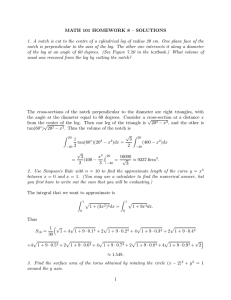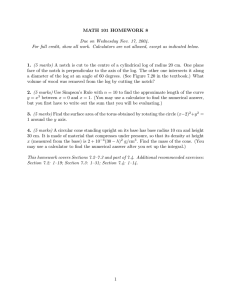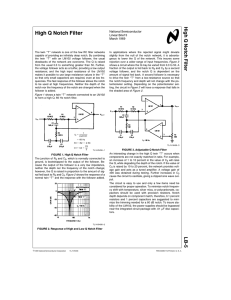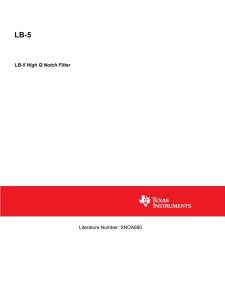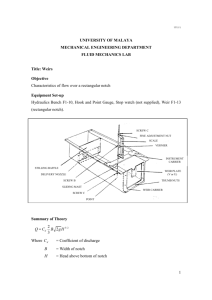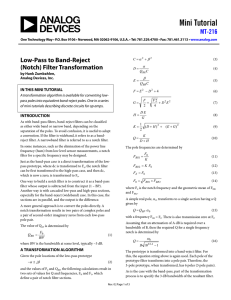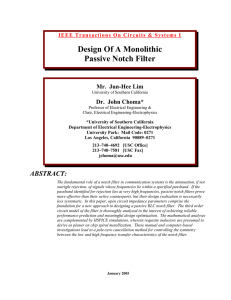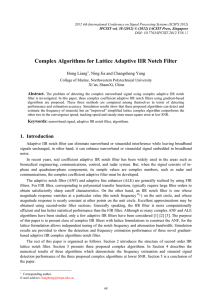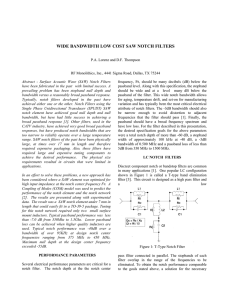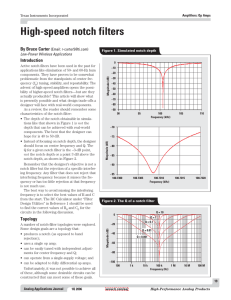Mini Tutorial MT-225
advertisement
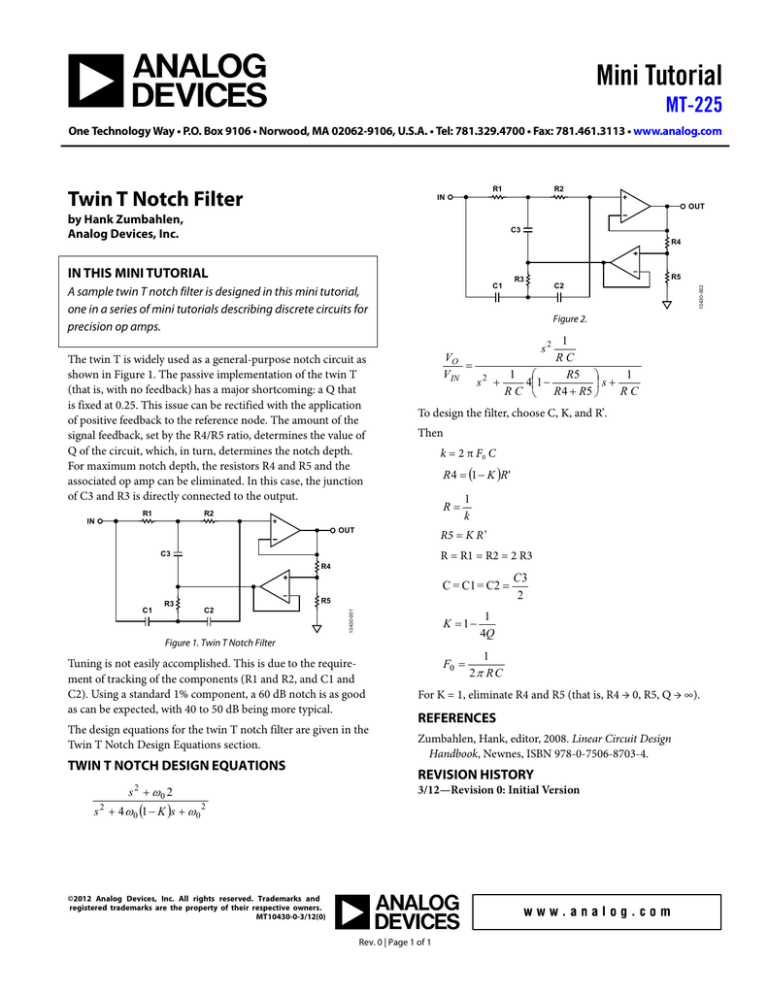
Mini Tutorial MT-225 One Technology Way • P.O. Box 9106 • Norwood, MA 02062-9106, U.S.A. • Tel: 781.329.4700 • Fax: 781.461.3113 • www.analog.com R1 Twin T Notch Filter OUT by Hank Zumbahlen, Analog Devices, Inc. C3 R4 C1 A sample twin T notch filter is designed in this mini tutorial, one in a series of mini tutorials describing discrete circuits for precision op amps. The twin T is widely used as a general-purpose notch circuit as shown in Figure 1. The passive implementation of the twin T (that is, with no feedback) has a major shortcoming: a Q that is fixed at 0.25. This issue can be rectified with the application of positive feedback to the reference node. The amount of the signal feedback, set by the R4/R5 ratio, determines the value of Q of the circuit, which, in turn, determines the notch depth. For maximum notch depth, the resistors R4 and R5 and the associated op amp can be eliminated. In this case, the junction of C3 and R3 is directly connected to the output. 1 RC = 1 R5 1 2 s + 41 − s+ R C R 4 + R5 RC s2 VO VIN To design the filter, choose C, K, and R’. Then k = 2 π F0 C R 4 = (1 − K )R ' R= R2 OUT 1 k R5 = K R’ R = R1 = R2 = 2 R3 C3 R4 C = C1 = C2 = R5 C2 10430-001 R3 K = 1− Figure 1. Twin T Notch Filter Tuning is not easily accomplished. This is due to the requirement of tracking of the components (R1 and R2, and C1 and C2). Using a standard 1% component, a 60 dB notch is as good as can be expected, with 40 to 50 dB being more typical. The design equations for the twin T notch filter are given in the Twin T Notch Design Equations section. TWIN T NOTCH DESIGN EQUATIONS s + 4 ω 0 (1 − K )s + ω 0 F0 = C3 2 1 4Q 1 2π R C For K = 1, eliminate R4 and R5 (that is, R4 → 0, R5, Q → ∞). REFERENCES Zumbahlen, Hank, editor, 2008. Linear Circuit Design Handbook, Newnes, ISBN 978-0-7506-8703-4. REVISION HISTORY 3/12—Revision 0: Initial Version s 2 + ω0 2 2 C2 Figure 2. IN C1 R5 R3 10430-002 IN THIS MINI TUTORIAL R1 R2 IN 2 ©2012 Analog Devices, Inc. All rights reserved. Trademarks and registered trademarks are the property of their respective owners. MT10430-0-3/12(0) Rev. 0 | Page 1 of 1
